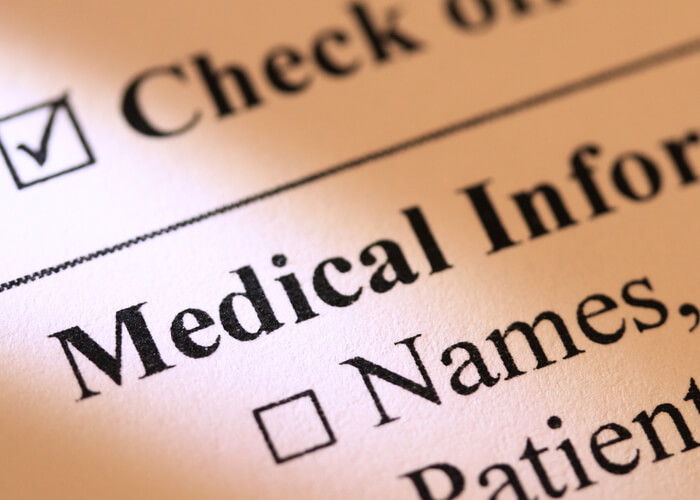This week, the FMCSA passed its last hurdle before publishing its list of Certified Medical Examiners. Read Part:1 of the Medical Examiner’s Handbook to learn what the medical examiners will be expected to look for.
The following is taken from the FMCSA Medical Examiner’s Handbook:
Certification and recertification occur only when the medical examiner determines that the driver is medically fit for duty in accordance with Federal qualification requirements for commercial drivers.
You must perform the described physical examination
Body System (Column 1) ” CHECK FOR: Overview
1. General Appearance
Observe and note on the Medical Examination Report form any abnormalities with posture, limps, or tremors. Also observe and note driver affect and overall appearance. Note driver demeanor and whether responses to questions indicate potential adverse impact on safe driving.
Is the driver markedly overweight? If yes, what are the clinical and safety implications when integrated with all other findings?
2. Eyes
At a minimum, you must check for pupillary equality, reaction to light and accommodation, ocular motility, ocular muscle imbalance, extraocular movement, nystagmus, and exophthalmos.
3. Ears
You should check for evidence of any aural disease or condition. At a minimum, you must check for scarring of the tympanic membrane, occlusion of the external canal, and perforated eardrums.
The presence of some hearing disorders, such as Meniere’s disease, may interfere significantly with driving ability and the performance of other CMV driver tasks. In this case, guidelines recommend not to certify the driver.
4. Mouth and Throat
Does the condition or treatment require long-term follow-up and monitoring to ensure that the disease is stabilized, and the treatment is effective and well tolerated?
5. Heart
You must examine the heart for murmurs, extra sounds, enlargement, and a pacemaker or implantable cardioverter defibrillator. Check the lower extremities for pitting edema and other signs of cardiac disease.
Does your examination find any abnormalities that indicate the driver may have a current cardiovascular disease accompanied by and/or likely to cause symptoms of syncope, dyspnea, collapse, or congestive cardiac failure?
Can the condition be corrected surgically or managed well by pharmacological treatments? Is the disease progressive?
Does the condition or treatment require long-term follow-up and monitoring to ensure that the disease is stabilized and treatment is effective and well-tolerated?
6. Lungs and Chest, Not Including Breast Examination
You must examine the lungs and chest for abnormal chest wall expansion, respiratory rate, and breath sounds including wheezes or alveolar rales. You must check for impaired respiratory function and cyanosis. Be sure to examine the extremities to check for clubbing of the fingers and other signs of pulmonary disease.
7. Abdomen and Viscera
You must check for enlarged liver and spleen, masses, bruits, hernia, and significant abdominal wall muscle weakness. Check for tenderness and auscultate for bowel sounds.
8. Vascular System
You must check for abnormal pulse and amplitude, carotid or arterial bruits, and varicose veins. Check for pedal pulses.
The diagnosis of arterial disease should prompt you to evaluate for the presence of other cardiovascular diseases.
9. Genitourinary System
You must check for hernias. You should evaluate any hernia that causes the driver discomfort to determine the extent to which the condition might interfere with the ability of the driver to operate a CMV safely.
An abnormal urinalysis indicates further testing to rule out underlying medical problems.
10. Extremities-Limb Impaired. Driver may be subject to Skill Performance Evaluation (SPE) certificate if otherwise qualified.
Check for fixed deficits of the extremities caused by loss, impairment, or deformity of an arm, hand, finger, leg, foot, or toe. Does the driver have a perceptible limp?
Does the driver have sufficient grasp and prehension in the upper limbs to maintain steering wheel grip? Does the driver have sufficient mobility and strength in lower limbs to operate pedals properly?
Does the driver have signs of progressive musculoskeletal conditions, such as atrophy, weakness, or hypotonia?
Does the driver have clubbing or edema that may indicate the presence of an underlying heart, lung, or vascular condition?
NOTE: If you find a driver is medically qualified EXCEPT FOR a fixed deficit of an extremity caused by the loss or functional impairment of a limb, you can qualify the driver, subject to obtaining an SPE certificate.
11. Spine, Other Musculoskeletal
You must check the entire musculoskeletal system for previous surgery, deformities, limitations of motion, and tenderness. Does the driver have a diagnosis or signs of a condition known to be associated with acute episodes of transient muscle weakness, poor muscular coordination, abnormal sensations, decreased muscular tone, and/or pain? What is the:
- Nature and severity of the condition?
- Degree of limitation present?
- Likelihood of progressive limitation?
- Likelihood of gradual or sudden incapacitation?
12. Neurological
You must examine the driver for impaired equilibrium, coordination, and speech pattern. Does the driver have ataxia? Are deep tendon reflexes asymmetric? Are patellar reflexes normal? Is Babinski’s reflex negative or normal? Are there any sensory or positional abnormalities?
